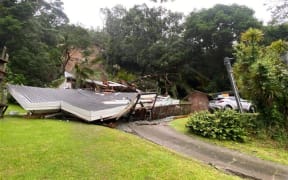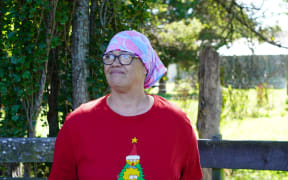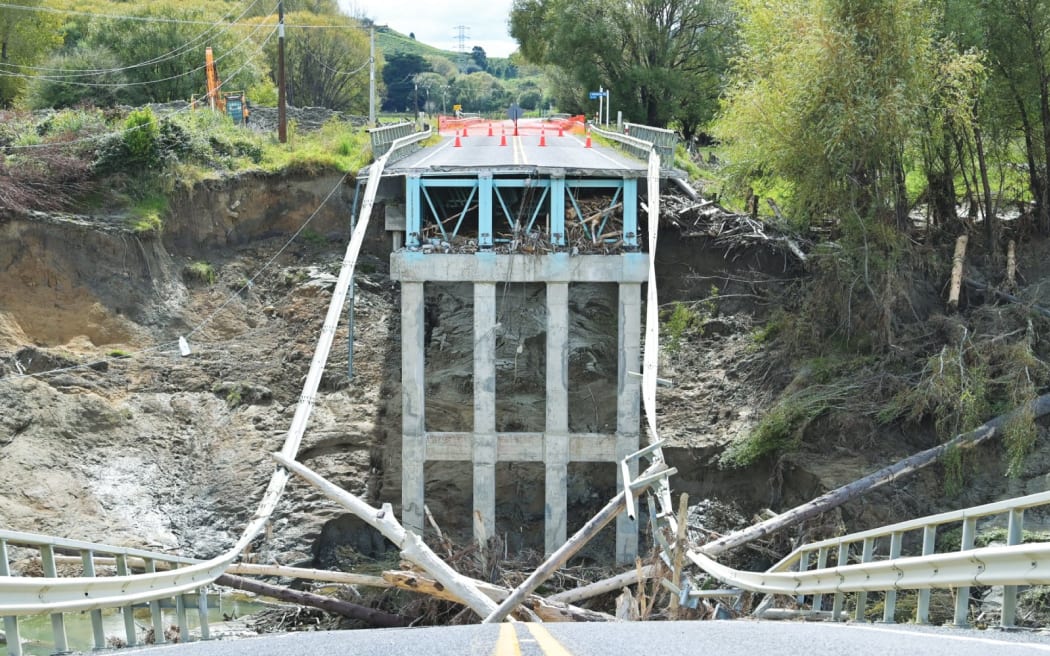
The Hikuwai No.1 Bridge between Tolaga Bay and Tokomaru Bay was washed out during Cyclone Gabrielle. Photo: Liam Clayton / Gisborne Herald
Councils in cyclone-hit regions staring down a decade-long roading recovery say they simply cannot afford it.
As footage of crumbling roads, falling slips and battered bridges emerged in the days following Cyclone Gabrielle, it was clear a mammoth effort would be needed to piece the network back together.
But a year on, it has also become clear the associated price tag is too much for ratepayers to bear.
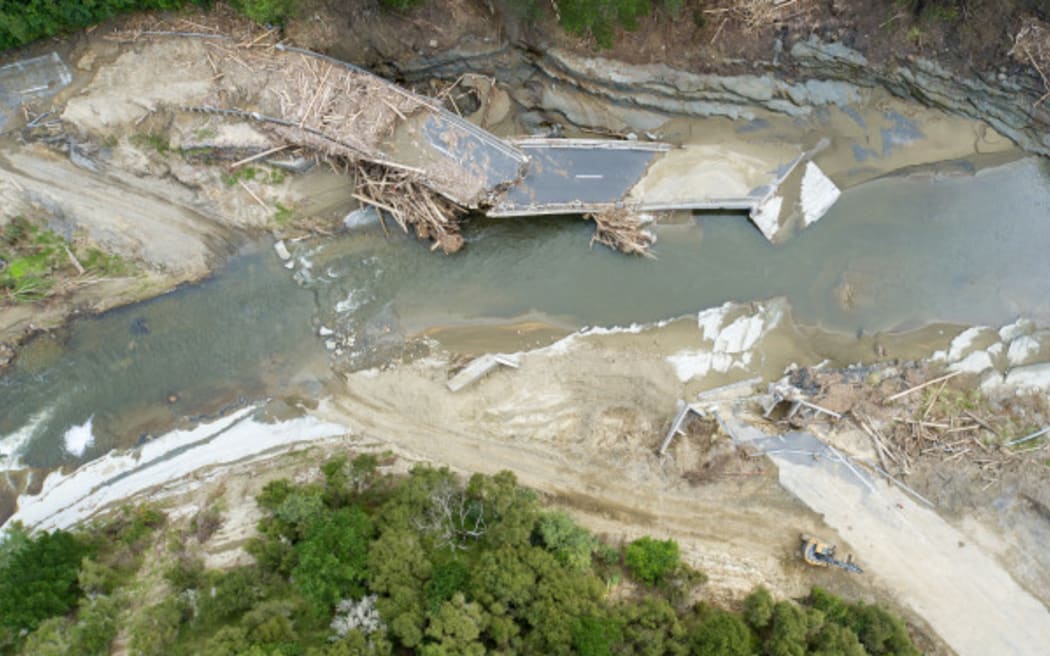
The old Waikare Gorge bridge following Cyclone Gabrielle. Photo: Waka Kotahi
"The burden is enormous," said Hastings Mayor Sandra Hazlehurst.
While the government stumped up with $233 million to fix her district's roads and bridges, Hazlehurst said a $600 million budget hole remained.
"We have to work out how we can deliver, and when we can deliver, and when we will rate for that delivery," she said.
"So that is what we're working through at the moment, just how we manage that extra burden of $600 million without the support of the Crown."
Further south, Central Hawke's Bay District Council said it was $129 million short on its roading bill, on top of the government's $36 million contribution. It too was unsure how it would be paid for.
"The district will still require major investment to ensure we have a road network that our communities can rely on," said chief executive Doug Tate.
People power also lacking
While councils ponder how to come up with the cash, they also wonder who will get the job done.
"There is more work than we can do," said Gisborne mayor Rehette Stoltz.
Numbers crunched by Te Waihanga Infrastructure Commission paint a picture of the gap between the work required, and boots on the ground.
It projected the regions affected by Cyclones Gabrielle and Hale, and the Auckland anniversary floods, needed another 17,500 workers at what it believed would be the peak of the rebuild effort - the end of next year.
Clearly, it would take time, Stoltz said, calling on the public for patience.
But she acknowledged reliable roads were a "bottom line".
"Our people deserve to be able to get to work, to school, to be able to get to the clinic or the hospital. Our businesses deserve to get their produce in and out of this region."
"I cannot shut this region every time we have a wet weather event. It is unrealistic. It is unfair.
No promises from the government
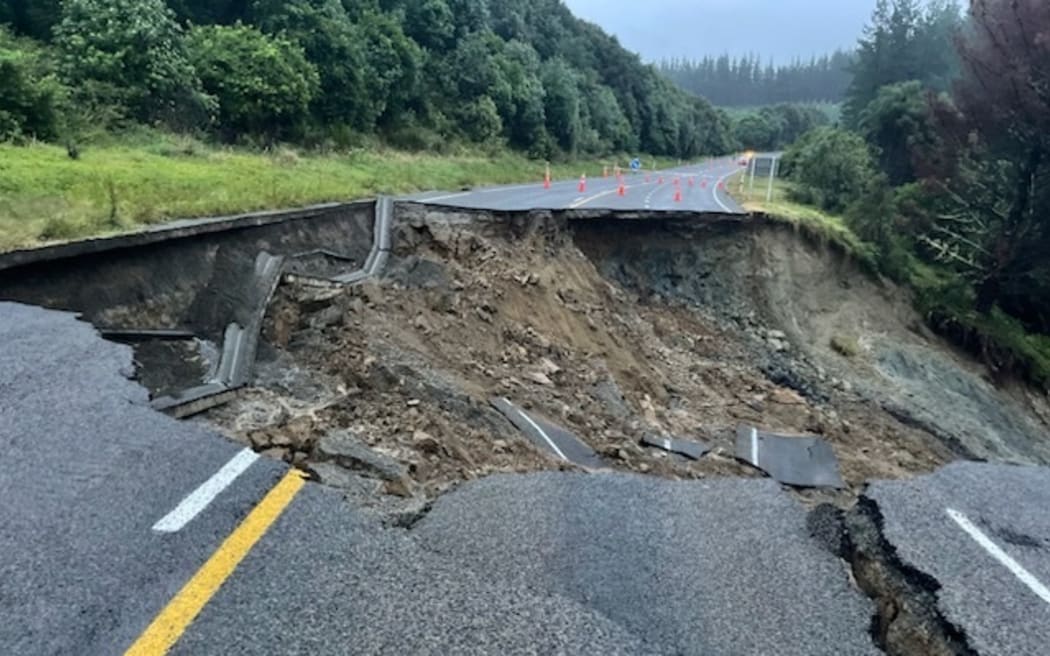
SH5 between Te Pohue and Glengarry in February 2023. Photo: Supplied: Waka Kotahi
On the Prime Minister's latest visit to Hawke's Bay, it seemed the message was received.
"We're very clear about the road challenges that we've got here," he said.
But Luxon made no promises about how the councils' funding shortfalls would be met.
Sandra Hazlehurst plans to keep asking for central government support, most immediately when with Finance Minister Nicola Willis who is due to visit.
"Infrastructure is our number one priority, that is our core business, and we really can't afford to do this on our own."

